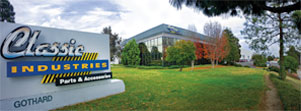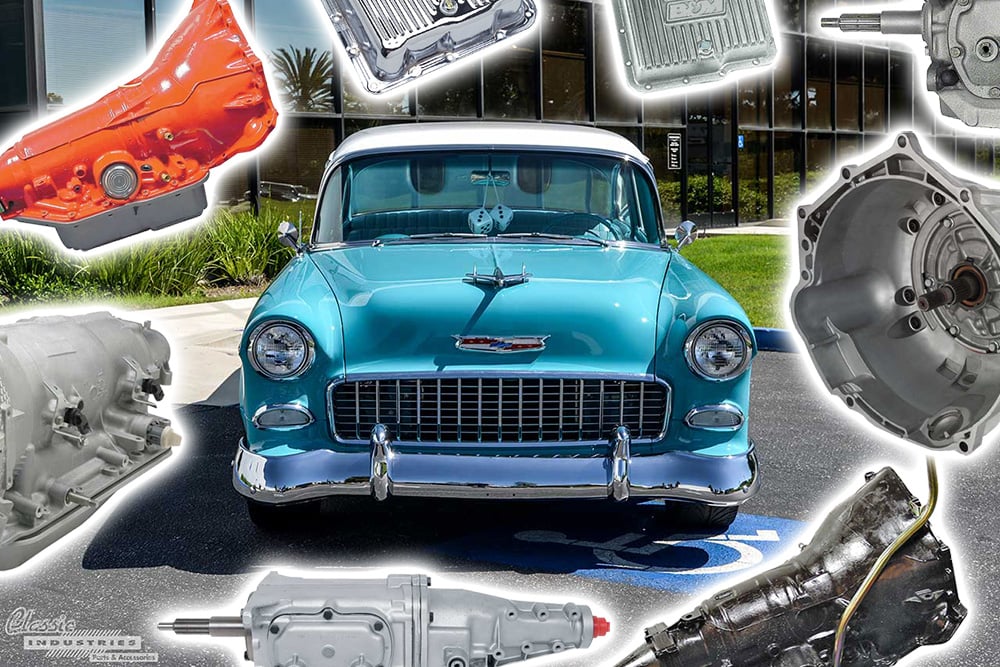
Have you ever wondered, "What transmission do I have?" As time marches on, technology changes. Classic car restoration is not a new hobby, and the older the project car, the more likely it is that someone has installed a different transmission at some point along the way. Modern 6-speeds are easy to spot, and 5-speeds are not difficult either, but when it comes to older 4-speeds and automatics, the increased variety can muddy the waters. So, whether you are heading out to check out a "For Sale" ad that could be your next project or trying to make heads or tails of a junkyard find, the following charts can be useful guides when it comes to GM transmission identification.
GM Transmission Identification
I. Introduction A. Importance of identifying GM transmissions B. Challenges with older transmission models
II. Automatic Transmissions A. Identification through transmission pan shape and bolt count B. Overview of key GM automatic transmissions 1. Powerglide 2. Turbo-Hydramatic 400 (TH400) 3. Turbo-Hydramatic 350 (TH350) 4. Turbo-Hydramatic 200 (TH200) 5. Turbo-Hydramatic 200-4R (TH200-4R) 6. Turbo-Hydramatic 700-R4 (TH700-R4), a.k.a. 4L60/4L60E 7. 4L80E C. Availability of replacement parts
III. Manual Transmissions A. Identification challenges with older 4-speed manuals B. Common 4-speed manual transmissions 1. Muncie (M20, M21, M22) 2. Saginaw 3. Borg-Warner C. Resources for specifications and parts
IV. Additional Resources A. Using GM VIN decoders for more vehicle information B. Guides for specific GM models
V. Conclusion A. Finding parts and replacements B. Resources available at Classic Industries
Automatic Transmissions
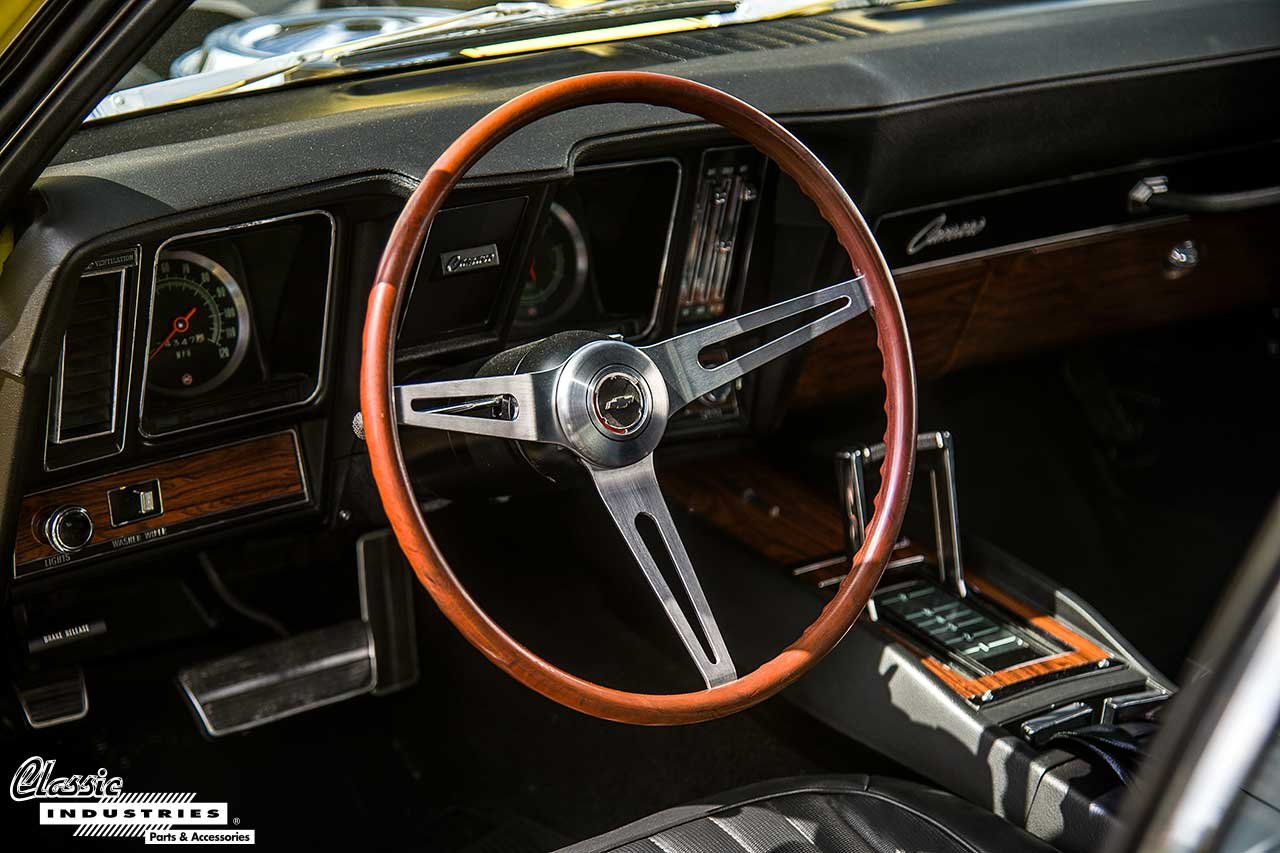
The easiest method of GM automatic transmission identification is to examine the transmission pan. New transmission designs came with new, unique pan shapes, and the general shape of the pan often paints a fairly clear picture of which automatic transmission you are dealing with. Once you identify the pan, count the number of transmission pan bolts for confirmation.
| 14 Bolts | 16 Bolts | 11 Bolts | 17 Bolts |
|---|---|---|---|
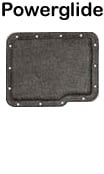 |
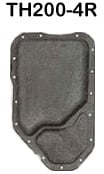 |
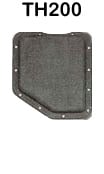 |
 |
| 13 Bolts | 13 Bolts | 16 Bolts | |
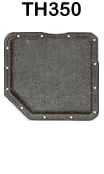 |
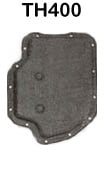 |
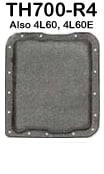 |
Here's a quick overview of each transmission. Although they are no longer offered on new vehicles, rebuilt and aftermarket versions are still available for each of these models.
Powerglide
First year available: 1950
The Powerglide is a 2-speed automatic transmission. The earliest models used a cast-iron case and were air-cooled, but during the 1960s, GM switched to an aluminum case and a fluid cooler. These transmissions are very durable and still popular today among drag racers.

Above: This elegant 1958 Impala convertible is equipped with a 348ci V8 and Powerglide transmission. Photo courtesy of Mecum Auctions.
By the mid-1950s, this transmission could be found in more than half of all new Chevrolet vehicles. GM continued to offer the Powerglide transmission as a tried-and-true option for affordable models such as the six-cylinder Nova all the way through 1973.
Turbo-Hydramatic 400 (TH400)

Above: This 1974 Trans Am was spec'd with the potent 455ci Super Duty V8 backed by a TH400 automatic transmission. This transmission was able to hold the substantial torque produced by this 7.5L engine. Photo courtesy of Mecum Auctions.
First year available: 1964
The Turbo-Hydramatic transmission is a 3-speed automatic transmission which was first offered in 1964 Cadillac vehicles. Later, it became available for Buick, Oldsmobile, Pontiac, and Chevrolet cars.
Turbo-Hydramatic 350 (TH350)
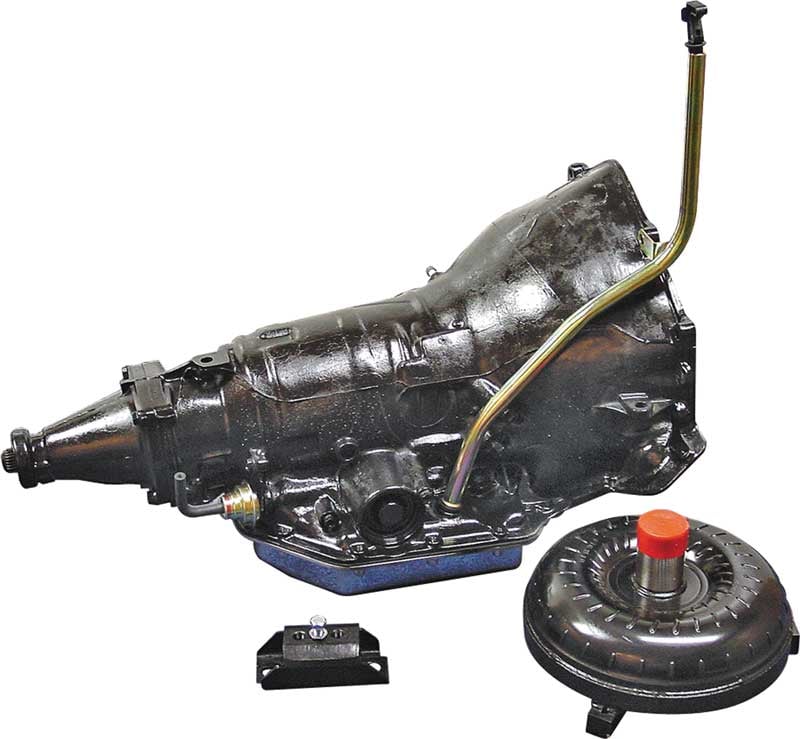
Above: This Street Smart TH350 transmission from Performance Automatic features a street/strip valve body, high performance racing clutch, and 11-inch 2600rpm stall converter.
First year available: 1969
Similar to the TH400, the TH350 is a 3-speed automatic transmission, but with a slightly lighter and more compact design. It would continue to be used in Chevrolet and GMC vehicles through the mid-1980s.
Turbo-Hydramatic 200 (TH200)
First year available: 1975
The TH200 was an even lighter version of the TH350 designed to be used in GM's small cars following the OPEC oil embargo in 1973.
Turbo-Hydramatic 200-4R (TH200-4R)
First year available: 1981
The TH200-4R was introduced in the early 1980s as a 4-speed overdrive version of the TH200. It features some internal updates to withstand higher-powered engines, such as the turbocharged 3.8L V6 in the Buick Grand National and GNX (the latter came with a stronger torque converter and transmission cooler).
Turbo-Hydramatic 700-R4 (TH700-R4), a.k.a. 4L60/4L60E
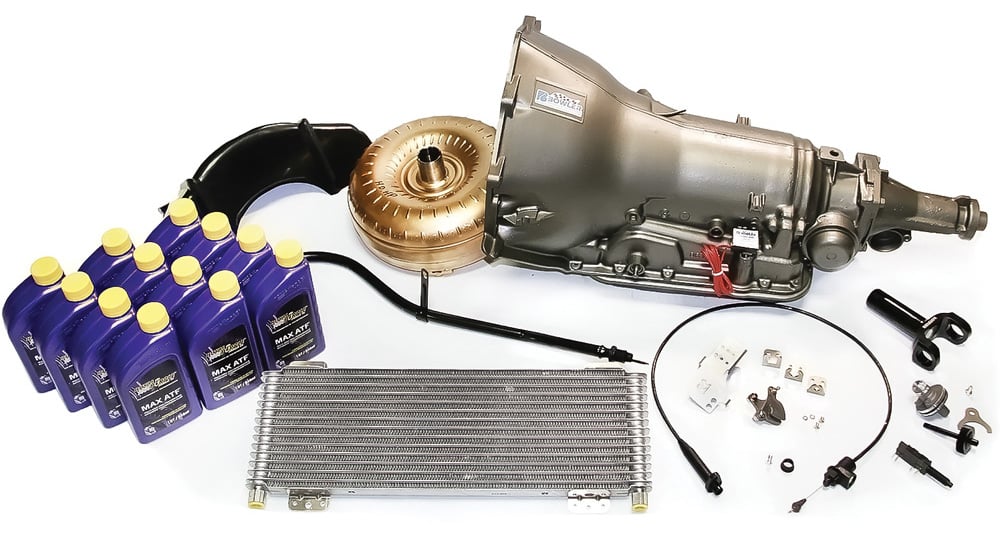
Above: This Bowler Performance Transmissions TH700-R4 includes a complete kit for upgrading the transmission in your GM vehicle.
First year available: 1982
Identifiable by its 16-bolt rectangular oil pan, the TH700-R4 is a 4-speed automatic transmission with less aggressive first-to-second and overdrive gear ratios than the TH200-4R. In 1990, the TH700-R4 was renamed to 4L60, and an E designation was added when it received a powertrain control module (PCM) for electronically-controlled shifting.
4L80E
First year available: 1991
The 4L80E is an electronically-controlled 4-speed automatic transmission that served as the successor to the TH400 series, this time with overdrive. It was primarily used in Chevrolet and GMC trucks and vans, though it also appeared in the Hummer H1, as well as several Rolls-Royce, Bentley, and Jaguar models.
You can find replacement parts for each of these transmissions here:
Manual Transmissions
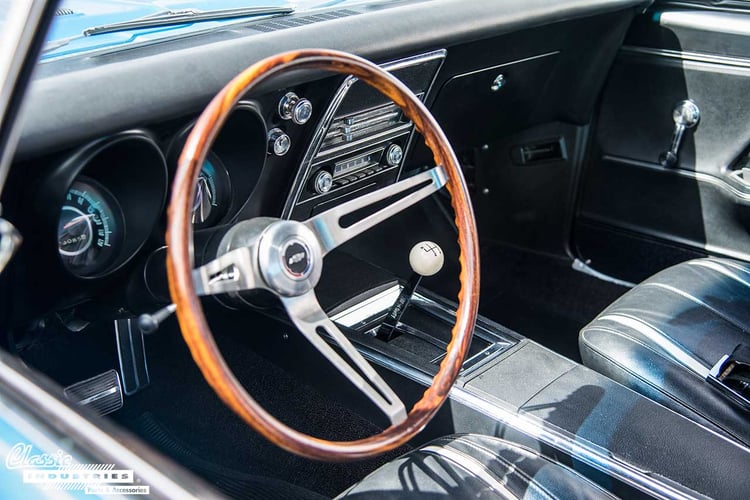
As mentioned above, modern 5-speed and 6-speed manual transmissions are easy to identify, but older 4-speed transmissions have more variety. While there are no distinctive pans and bolt counts to make transmission identification simple, 4-speed manual transmissions can be generally identified by examining the side profile. The shape of the main housing will give a reasonably reliable indication of the transmission group to which your gearbox belongs. Unfortunately, this makes transmission identification difficult to accomplish while the gearbox is installed in the vehicle.

Above: This restored Marina Blue '67 Camaro recently visited our Retail Showroom. It features a 295hp 350ci V8 paired with a Muncie M20 4-speed manual transmission.
Here are reference images of the three most common 4-speed manual transmissions: Muncie, Saginaw, and Borg-Warner.
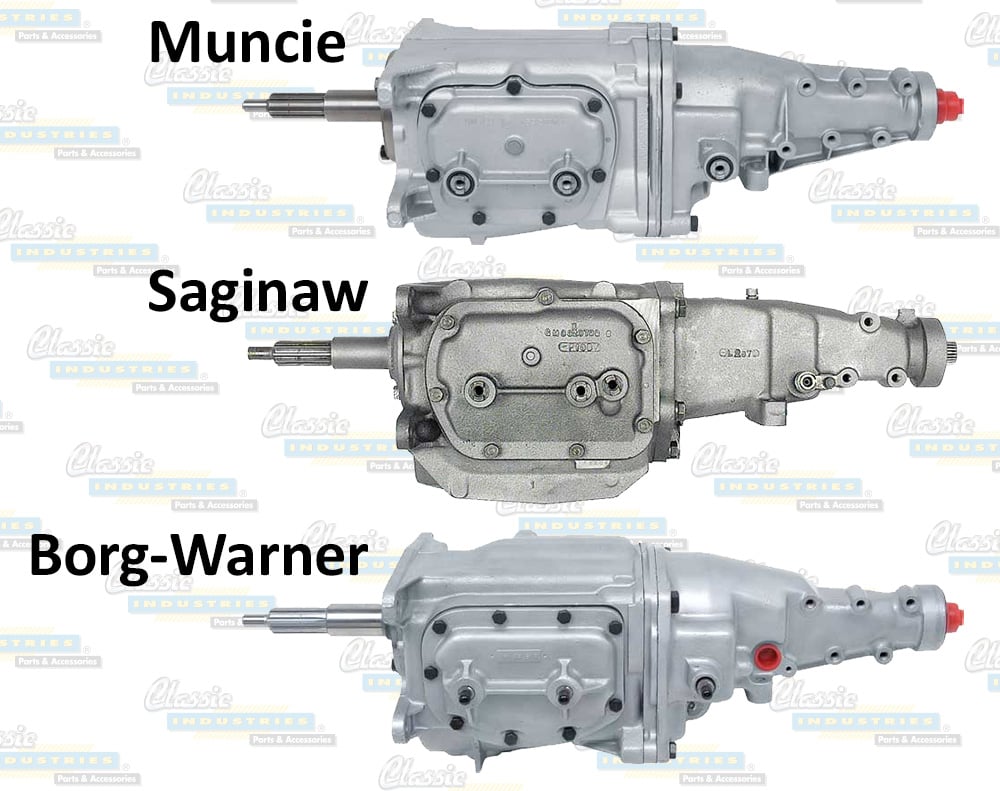
The popular Muncie 4-speed was available in three versions:
- Muncie M20 - Wide ratio
- Muncie M21 - Close ratio
- Muncie M22 "Rock Crusher" - Strengthened close ratio developed for high-torque applications, beginning with the Corvette Grand Sport racing program in 1963
More specifications for these GM manual transmissions, including gear ratios and case casting numbers, are available in this article from our friends at Chevy Hardcore magazine. You can find complete rebuilt manual transmissions and parts here:
Need More Info? Check Our GM VIN Decoders.
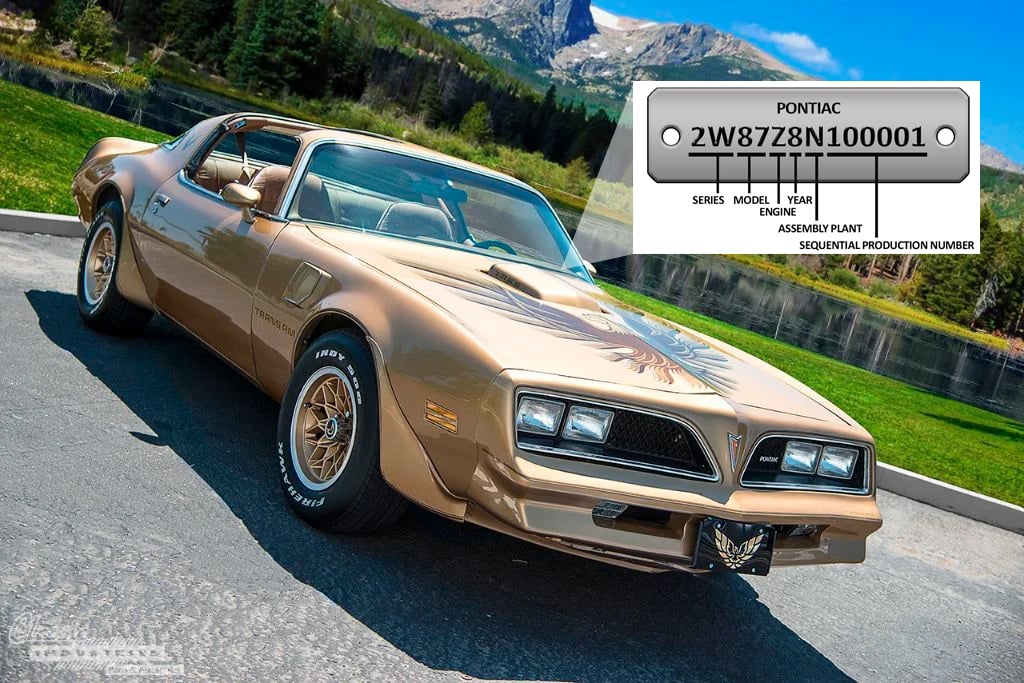
The VIN, or vehicle identification number, can provide more useful information about your GM vehicle. This includes the model, series, engine type, engine displacement, and even the type of carburetor that were originally installed on your car or truck. Refer to our GM VIN decoder articles below for a detailed guide on how to read each vehicle's VIN number:
- 1955-57 Chevy "Tri Five" VIN Decoder
- 1958-80 Chevy Impala / Full Size VIN Decoder
- 1962-79 Chevy Nova VIN Decoder
- 1967-02 Chevy Camaro VIN Decoder
- 1967-02 Pontiac Firebird VIN Decoder
Where to Buy GM Transmissions and Transmission Parts
Once you've answered the question, "what transmission do I have?," you might need to find maintenance parts or a complete replacement transmission. Classic Industries offers thousands of parts for GM transmissions and drivetrains. Check out our GM transmission parts store page, or click the button below to get a free full-color parts catalog.




